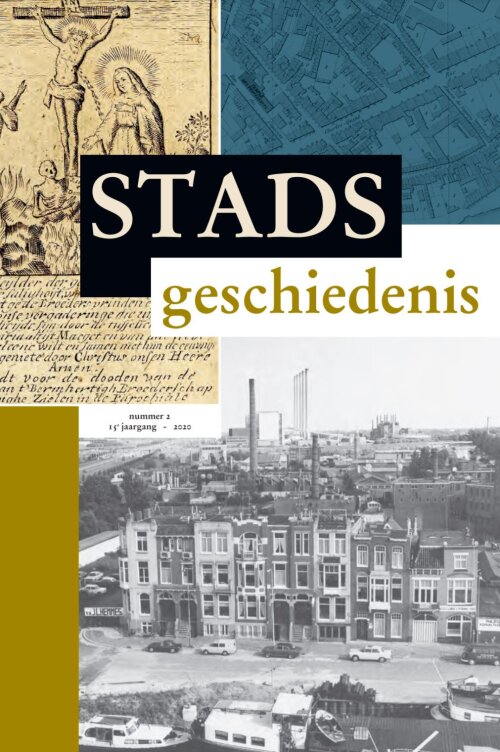Jaargang 2020 nr. 2
Inhoud
Bart Hekkema
Een ‘giffabriek’ nabij een woonwijk. De strijd tussen burgers, gemeentebestuur en chemische industrie in de Oosterpoortwijk in Groningen 1954-1983
Els Minne
Een meerwaarde voor de Gelovige Zielen. Leden en activiteiten van drie Antwerpse achttiende-eeuwse broederschappen
Werk in Uitvoering
Laura Debyser, Isabelle Devos
‘Zelfde straat, 130 jaar later’. Een educatieve oefening historische demografie in twee Gentse buurten
Interview
Hilde Greefs, Harm Kaal
Interview met Jan Hein Furnée
Abstracts
Els Minne, An added value for the Faithful Souls. Members and activities of three Antwerp eighteenth-century brotherhoods
Research into eighteenth-century Antwerp brotherhoods reveals that the centuries-old associations still managed to persuade many believers to become members. To fully grasp their appeal, it is essential to consider not only their members’ motives to join but also how these brotherhoods perceived and displayed their own added value. Therefore, this contribution examines the members and recurring activities of three Antwerp brotherhoods of the Faithful Souls. The analysis shows that these associations attracted members from all classes of society and that their added value lay primarily in spiritual assistance. By facilitating as much spiritual care (such as indulgences, funerals and masses) as possible within their member group, brotherhoods were able to highlight their added value as religious and social associations.
Bart Hekkema, A ‘toxic’ factory nearby a residential area
The contestation between citizens, municipal government and chemical industry in the Oosterpoort district in Groningen 1954-1983. During 1954 and 1983 contestation between citizens, municipal government and chemical industry occurred frequently in the Dutch city of Groningen. At stake was a agricultural pesticides manufacturer (Aagrunol) that was situated nearby a residential area and led to several protests from inhabitants. This article analyses the dynamics between the forces in play (citizens, local politics and chemical industry) and the shift in discourse from hindrance to conceptions that resemble citizens' fears of environmental disasters. Furthermore, the article shows how due to growing political and environmental consciousness, citizens changed their repertoires of contention and gained political traction which eventually resulted in the closure of the facility. The article portrays the transformation of the social confrontation with environmental pollution in the modern European city.
Cover
